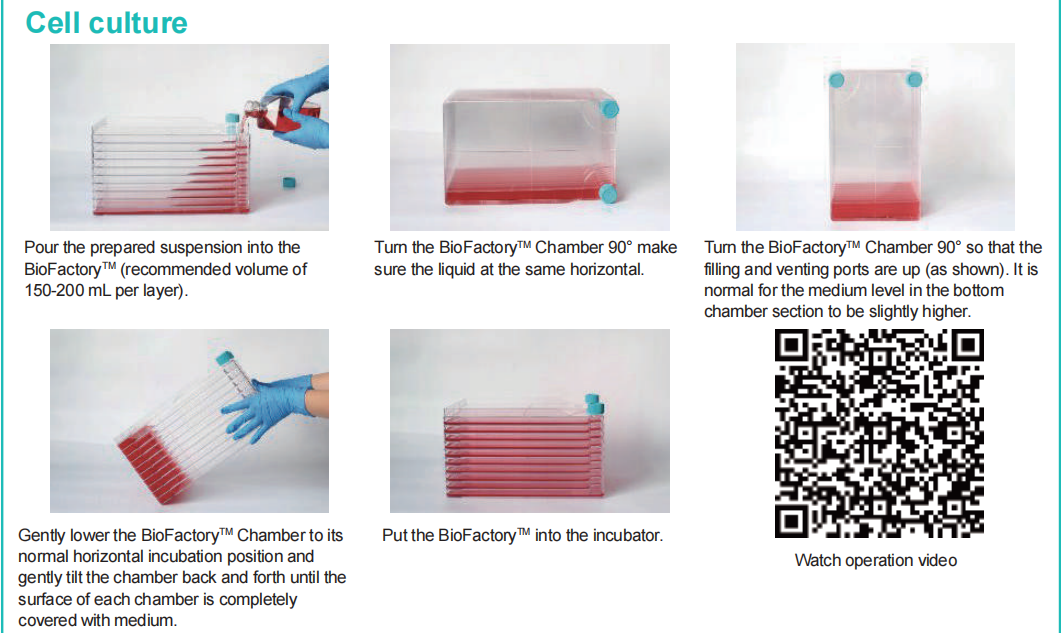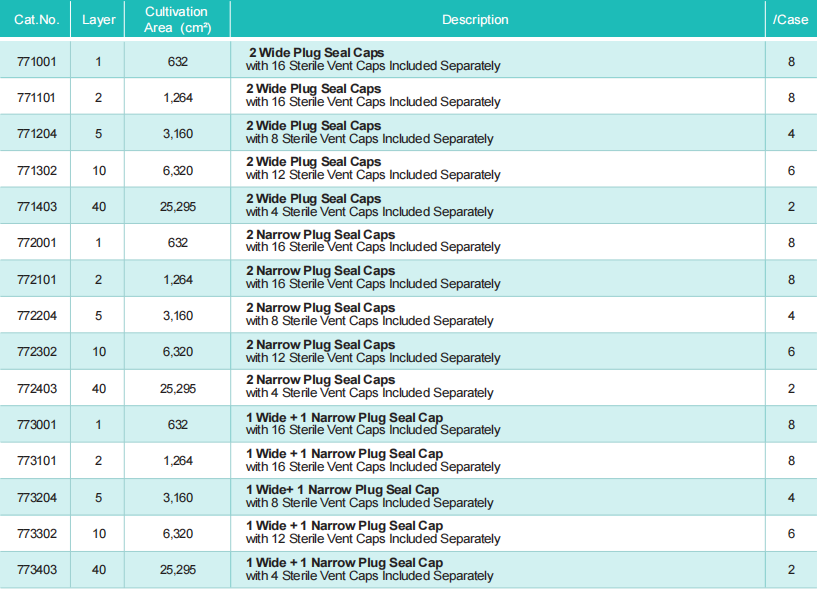
Privacy statement: Your privacy is very important to Us. Our company promises not to disclose your personal information to any external company with out your explicit permission.

The most recent issue introduces the NEST Biofactory TM, a cleverly designed vessel that facilitates the growth of adherent cells for large-scale production in industries such as vaccines, monoclonal antibodies, and biopharmaceuticals. The BioFactory TM maximizes culture area while minimizing factory footprint, resulting in a significant boost in cost-effective production capacity without altering the kinetic conditions of cell growth. And this issue explores the role of BioFactory TM in various industries, its usage stages, and how to operate it for maximum value.
Application
01 Cell and Gene Therapy
Cell and gene therapy refers to vector therapy, an emerging therapeutic modality that introduces exogenous genetic material into target cells, modifies or manipulates the expression of genes and alters the biological properties of cells to achieve therapeutic effects. A significant obstacle that it encounters currently is the secure and efficient transportation of the desired gene or cell into the human body. Generally, viruses, such as adenoviruses, adeno-associated viruses and lentiviruses, are used as vectors.
Small-scale production for research and development purposes uses adherent cells cultured in dishes, flasks and BioFactoriesTM. However, when it comes to clinical trials, where a large number of lentiviral vectors are required, BioFactory TM comes into play, particularly the 10-layer BioFactory TM.
02 Vaccine industry
Vaccines play an irreplaceable role in the prevention and control of human diseases, and there is a constant focus on achieving safe, efficient, and cost-effective mass production of vaccines. With advancements in biotechnology, new types of vaccines such as viral vector vaccines, DNA vaccines and mRNA vaccines have emerged one after another, in addition to the common types of vaccines such as inactivated vaccines, live attenuated vaccines and recombinant protein vaccines .
Under such circumstances, BioFactory TM is widely utilized in the industrial production of various vaccines including coronavirus vaccine, inactivated oral polio vaccine, lyophilised live attenuated hepatitis A vaccine, MMR vaccine, live oral rotavirus vaccine, and varicella vaccine.
03 Stem cell research
Stem cell is a kind of cell that have an infinite capacity for self-renewal and are capable of producing at least one type of highly differentiated daughter cell. According to clinicaltrials.gov, a resource provided by the U.S. National Library of Medicine, there are currently more than 1,300 clinical trials related to MSCs worldwide and 14 new stem cell drugs have been granted marketing authorization. And the scaling up of MSCs and multifunctional stem cells in BioFactories TM functions as an important step in stem cell researches.
BioFactory TM Manual
01 Suggested operating method for BioFactory TM

For 10-layer BioFactory TM 1. Pour the prepared medium into the BioFactory TM. ( 150-200ml per layer) . 2. Position the BioFactory TM on its side to level the liquid surface. 3. With the mouth facing upwards, allow the culture medium to stand for even distribution across all layers. 4. Slowly lower the BioFactory TM to a horizontal position. 5. Place in the cell culture incubator for incubation. For 10-Layer BioFactory TM with Tubes 1. Cut off the rolled strip on the tubings. 2. If necessary, add a clamp to the inlet tubing, then connect the end of the inlet tubing to the outlet tubing of the Storage Bottle through a sterile connecting device . 3. Add cell suspension, and close the clamp on the inlet tubing. The culture medium or cell suspension in side can be transferred into BioFactory TM by siphon or a peristaltic pump. Please avoid generating bubbles during the operation. 4. Position the BioFactory TM on its side to distribute the liquid evenly on each layer. The inlet tubing should face downwards, and the filter should face upwards to prevent liquid from entering the filter. 5. Rotate the BioFactory TM 90 degrees clockwise to make the mouth face upwards. Allow it to stand for even solution distribution across all layers. 6. Slowly place the BioFactory TM in a horizontal position, put the inlet tubing straight, and then place it in the incubator for incubation. Notes: 1. Due to the long period took by large incubators to reach the set temperature, please pre-heat BioFactory TM and culture medium in advance to accelerate cell spreading and significantly improve cell recovery rate. 2. Operate slowly to avoid generating bubbles, which may cause the culture medium to flow from the upper layer to the lower layer. 3. Avoid alcohol on the vent cap, which may wet the hydrophobic filter membrane and obstruct gas exchange or cause pressure imbalance during operation. 02 Suggested method for cell observation : Generally, an inverted microscope is used to monitor the survival rate and growth status of cells in BioFactoryTM. Since the culture environment between layers or within the same layer is basically the same, the overall status of cells can be learned through the observation of edge cells in the layers at the bottom or in one specific layer . Restricted by the distance between upper light and the carrier stage , a regular inverted microscope is applied in the observation of 1/2/5-layer BioFactory TM. But for the observation of a 10-layer BioFactory TM, the distance should be extended to accommodate the BioFactory TM. As for a 40-layer BioFactory TM with even more layers, large automated equipment is usually required since manual operation in this case is way too difficult. 03 Suggested method for c ell h arvesting : 1. Pour out the medium after culture . 2. Rinse with calcium- and magnesium-free phosphate-buffered saline (CMF-PBS) (40-50 mL per layer), and repeat it if necessary. 3. Digestion : preheat the digestion solution (10-40 ml recommended for per layer) 4. Collection: Centrifuge the solution at 1000 rpm for 5 minutes, remove the digestion solution and collect the cells. 5. Rinse the culture vessel with CMF-PBS or culture medium. Notes: 1. Immerse the surface of each layer with CMF-PBS completely, and gently shake the BioFactory TM back and forth to wash away the remaining culture medium. 2. Distribute the digestion solution evenly to each layer, gently tilt the culture vessel from side to side to immerse the surface of each layer with digestion solution completely, and gently tap the wall to detach the cells from the surface. 3. For the observation of digestion status in BioFactory TM, it is recommended to refer to that in cell culture flask s or 1-layer BioFactory TM under an identical culture condition, since the digestion status of cells in the middle layers cannot be observed clearly. A dedicated multi-layer microscope can be used to observe the digestion status of each layer of cells. 4. If there are a large number of cells in the washing solution or on the surface , multiple rinse-off or digestion may be required. 5. Even a slight deviation in the culture temperature may affect the cell harvesting rate, so it is necessary to control the temperature at the set temperature.



Privacy statement: Your privacy is very important to Us. Our company promises not to disclose your personal information to any external company with out your explicit permission.

Fill in more information so that we can get in touch with you faster
Privacy statement: Your privacy is very important to Us. Our company promises not to disclose your personal information to any external company with out your explicit permission.